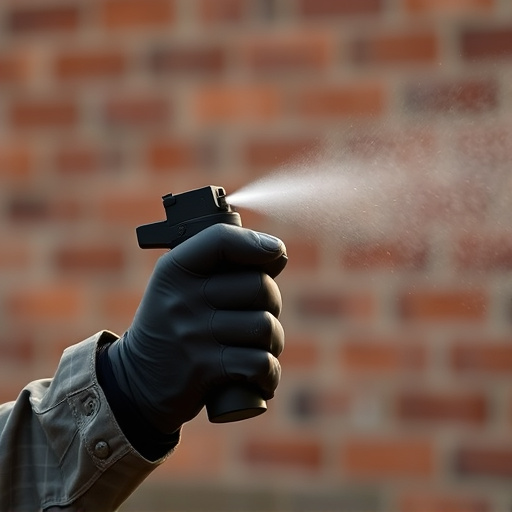Pepper spray, a human self-defense tool, deters aggressive dogs by releasing capsaicin, irritating their eyes and respiratory tract. High-quality pepper spray offers escape time, but it should complement broader personal safety strategies. Legal guidelines vary; strategic application, practice, and minimal use focusing on eyes and face are recommended to avoid misuse penalties while temporarily disrupting dog behavior.
“Discover the power of pepper spray as a deterrent for dog attacks with our comprehensive guide. Understanding its composition and efficacy against dogs is key to effective self-defense. Learn practical implementation strategies for optimal use, ensuring safety and responsibility. Explore legal considerations to navigate best practices, empowering you to protect yourself while adhering to guidelines. Uncover the benefits of this non-lethal method as a strategic pepper spray defense against dogs.”
- Understanding Pepper Spray: Its Composition and Efficacy Against Dogs
- Implementational Strategies: How to Effectively Use Pepper Spray as a Defense
- Legal Considerations and Best Practices for Responsible Pepper Spray Use on Dogs
Understanding Pepper Spray: Its Composition and Efficacy Against Dogs
Pepper spray, a common self-defense tool for humans, has also gained popularity as a deterrent against aggressive dogs. When deployed, pepper spray creates a temporary yet potent barrier by releasing capsaicin, the compound responsible for the heat and irritation sensation in chili peppers. This chemical irritates the dog’s eyes, nose, and respiratory tract, causing them to become disoriented and temporarily disabled.
The efficacy of pepper spray against dogs varies based on factors such as the concentration of capsaicin, the distance at which it is deployed, and the weather conditions. Generally, a high-quality pepper spray with a concentration suitable for canine deterrence can be highly effective in distracting and disorienting an attacking dog, providing the user with time to escape or seek help. However, it’s crucial to remember that pepper spray is not a foolproof solution and should be used as part of a comprehensive personal safety strategy when facing potentially dangerous canine encounters.
Implementational Strategies: How to Effectively Use Pepper Spray as a Defense
Implementing pepper spray as a defense against dog attacks requires strategic application and understanding. Firstly, ensure you have a high-quality, legal pepper spray designed specifically for animal deterrence. These sprays typically contain a higher concentration of capsaicin, the active ingredient that causes irritation. Secondly, familiarize yourself with local laws regarding pepper spray use to avoid any legal repercussions. When confronted by an aggressive dog, aim for the face and eyes – areas sensitive to capsaicin – while keeping a safe distance. A quick, targeted blast can disrupt the dog’s behavior and give you precious time to escape or seek help. Regularly practice your technique in controlled environments to build confidence and ensure effective deployment during emergencies.
Legal Considerations and Best Practices for Responsible Pepper Spray Use on Dogs
The use of pepper spray as a deterrent against aggressive dogs is a controversial topic, with legal implications that vary widely depending on jurisdiction. In many areas, citizens are permitted to use pepper spray to protect themselves or their property from an attacking dog, but strict guidelines and restrictions apply. It’s crucial to understand local laws before considering this defense mechanism; penalties for misuse can be severe.
Best practices for responsible pepper spray use on dogs emphasize safety and minimalism. Targeting the eyes and face of an aggressive dog is recommended, as pepper spray disrupts vision and breathing temporarily without causing permanent harm. Users should ensure they have a clear line of sight to the assailant and only deploy the spray when absolutely necessary. After use, affected dogs should be monitored for any adverse reactions, and veterinary care should be sought if needed.
Pepper spray, as a non-lethal self-defense mechanism against dogs, offers a valuable tool for responsible pet owners and individuals facing aggressive canine encounters. By understanding its composition, implementing effective usage strategies, and adhering to legal considerations, one can ensure its safety and efficacy. This article has provided insights into navigating the world of pepper spray defense against dogs, empowering folks to protect themselves and their loved ones while promoting humane and strategic deterrence.
